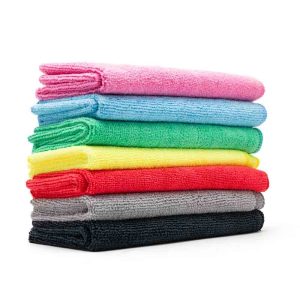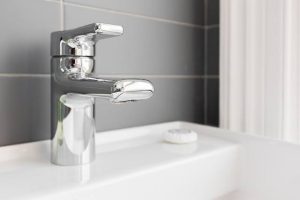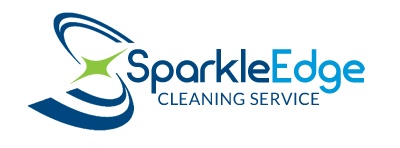Restroom Cleaning Dos and Don’ts: How to Spot Polished Pros from Corner Cutters
Restroom cleanliness is one of the most visible reflections of how a commercial building is managed. For tenants, clients, and staff, a poorly maintained restroom doesn’t just look bad — it signals neglect, lowers confidence in building management, and can pose serious health and safety risks.
“Nothing damages a building’s image faster than a restroom that looks or feels neglected,” says Roberson Murillo, Director of Operations at Sparkle Edge Cleaning. “It’s one of the first places people notice, whether they realize it or not.”

Roberson Murillo / Director of Operations
This is a critical area where property managers need consistently professional results. Restrooms are one of the most overlooked opportunities to impress. In this guide, we’ll walk you through the dos and don’ts of professional restroom cleaning so you can tell the difference between a polished pro and a corner-cutting crew.
The Guide: Dos & Don’ts of Restroom Cleaning
Are They Using The Right Protection?
Do: Professional cleaning begins with safety. That means wearing gloves, protective eyewear, and sometimes even face shields when handling certain chemicals.
Don’t: Gloves alone don’t cut it. “We’ve seen cleaners spray harsh chemicals without any eye protection. That’s risky for them and doesn’t inspire confidence in your building’s care,” Roberson warns.
Make Sure the Restroom is Clear
Do: Always check to make sure no one is inside before closing off the restroom. Use visible signage and a cleaning cart to block entry. Announcing yourself is not enough, a safe and visual inspection is needed to ensure no one is inside the restroom.
Don’t: Never assume the restroom is unoccupied.Calling into a restroom is not enough, you need to make a personal inspection before closing it.
Restocking Is Not a ‘Close Enough’ Task
Do: Fully restock all consumables—paper towels, toilet paper, soap, seat covers, and hand sanitizer. “Guests shouldn’t have to think twice about whether supplies will be available.”
Don’t: Leaving dispensers half-full or empty with the intent to refill later creates an unnecessary risk for poor impressions and unhappy tenants.
Handling Trash Properly Every Time
Do: Empty trash bins completely, wipe down the inside, and always replace liners.
Don’t: Pushing trash down or removing it without replacing liners is a shortcut that invites bacteria and risks exposure to sharp or hazardous materials.
Dusting: Is in the Details
Do: Dust vents, ledges, and the tops of partitions. Use the correct cloth for each surface: yellow for dusting, red for toilets, blue for mirrors, green for counters, and pink for stainless steel.
Don’t: Don’t reuse the same cloth across surfaces. “Cross-contamination is a big no-no in our world,” says Roberson. “It’s about professionalism and hygiene.”

Professional cleaners have a designated cloth for each type of cleaning.
Let the Disinfectant Do Its Job
Do: Apply disinfectant to toilets and urinals and allow it to sit — or dwell — for the manufacturer-recommended time.
Don’t: Wiping it off immediately wastes product and leaves germs behind. “This is one of the easiest corners to cut, but also one of the most dangerous,” Roberson emphasizes.
Sinks, Mirrors and Fixtures Need To Shine
Do: Clean sinks thoroughly including all surfaces and polish all fixtures. Use a proper streak-free cleaner for mirrors and wipe from top to bottom.
Don’t: Wiping just the visible surfaces. “When you skip polishing faucets or leave water spots, it looks like the job wasn’t finished,” Roberson says.

Fixtures are a high visibility point.
Don’t Just Swirl Blue in the Bowl
Do: Deep clean toilets and urinals — inside, outside, around the base, and under the seat. Leave the seat up to show it was cleaned.
Don’t: “Over 20 years, I’ve seen it all — including cleaners who wipe the top surfaces only and spray window cleaner in the water to turn it blue.” Spraying the bowl and tossing in blue cleaner might give the illusion of clean, but it’s nowhere near a proper, hygienic cleaning.
Polish That Stainless Steel
Do: Shine stainless steel surfaces like dispensers until they gleam. These are high profile spots that almost every visitor will notice.
Don’t: Dull, fingerprint-covered metal tells tenants you’re not paying attention to detail. “These are the little things that make a poor impression,” says Roberson.
Floors Should Be Spotless, Not Just Wet
Do: You must vacuum the floors first to remove debris, then mop with a clean water solution. Change the water regularly and pay attention to corners. The water should be changed after every fourth bathroom.
Don’t: Mopping with dirty water spreads grime and gives floors a dull finish. “If that mop bucket is filled with dark gray water, it’s an easy spot that it’s not being changed,” Roberson says.
Final Thoughts From The Field
“A well-cleaned restroom sends a message: this building is managed with care,” Roberson concludes. “At Sparkle Edge, we don’t cut corners — we clean them.”
Whether you manage a single property or a large commercial portfolio, partnering with a cleaning team that follows best practices ensures your building consistently reflects the professionalism and care your tenants expect.
About Sparkle Edge Cleaning
We offer commercial property managers a trusted cost-effective cleaning partner who keeps their buildings spotless, compliant, and tenant-ready while staying on budget — impressing owners, visitors and tenants alike without wasting time on day-to-day micro-management.
Learn more at SparkleEdge.com
